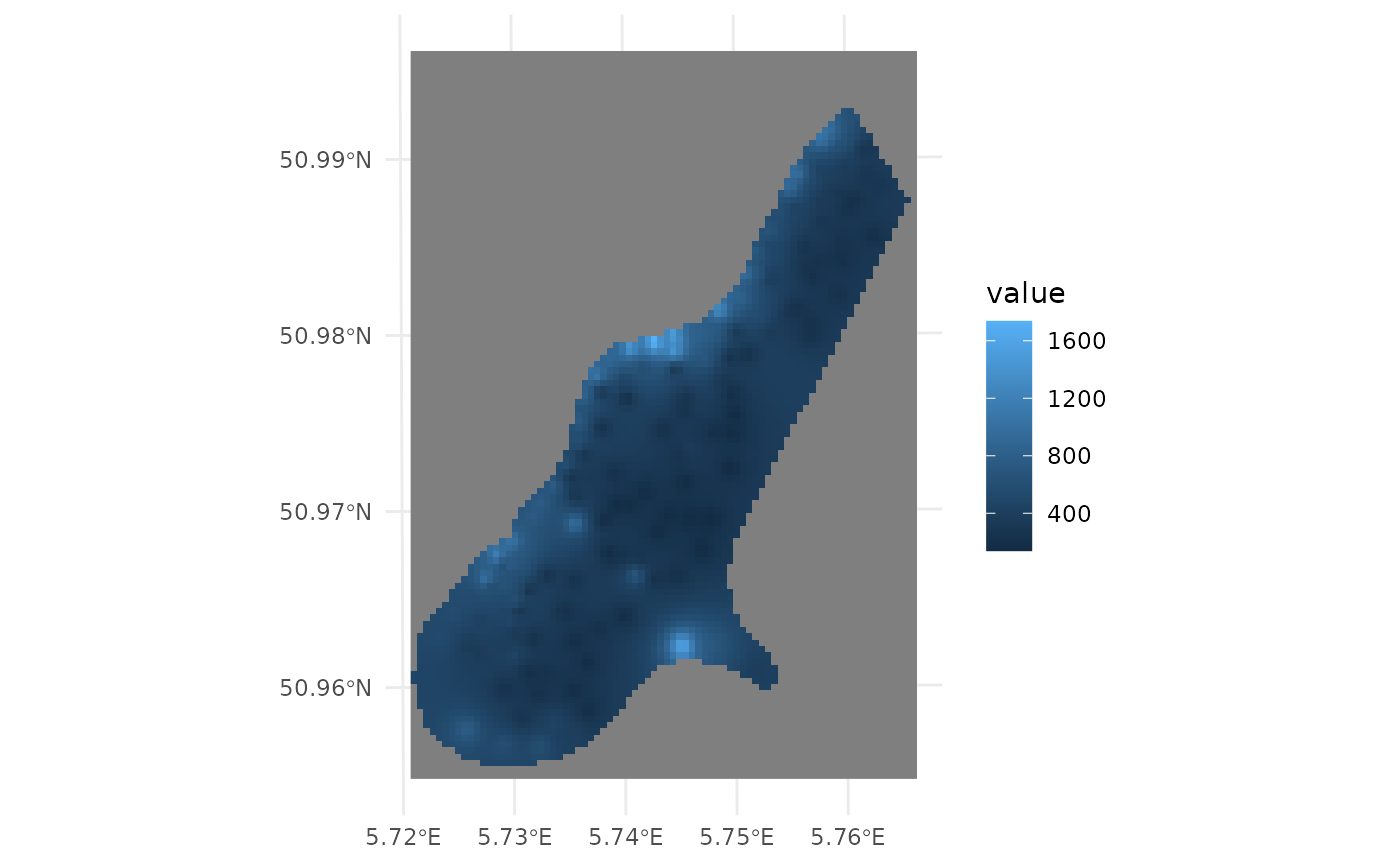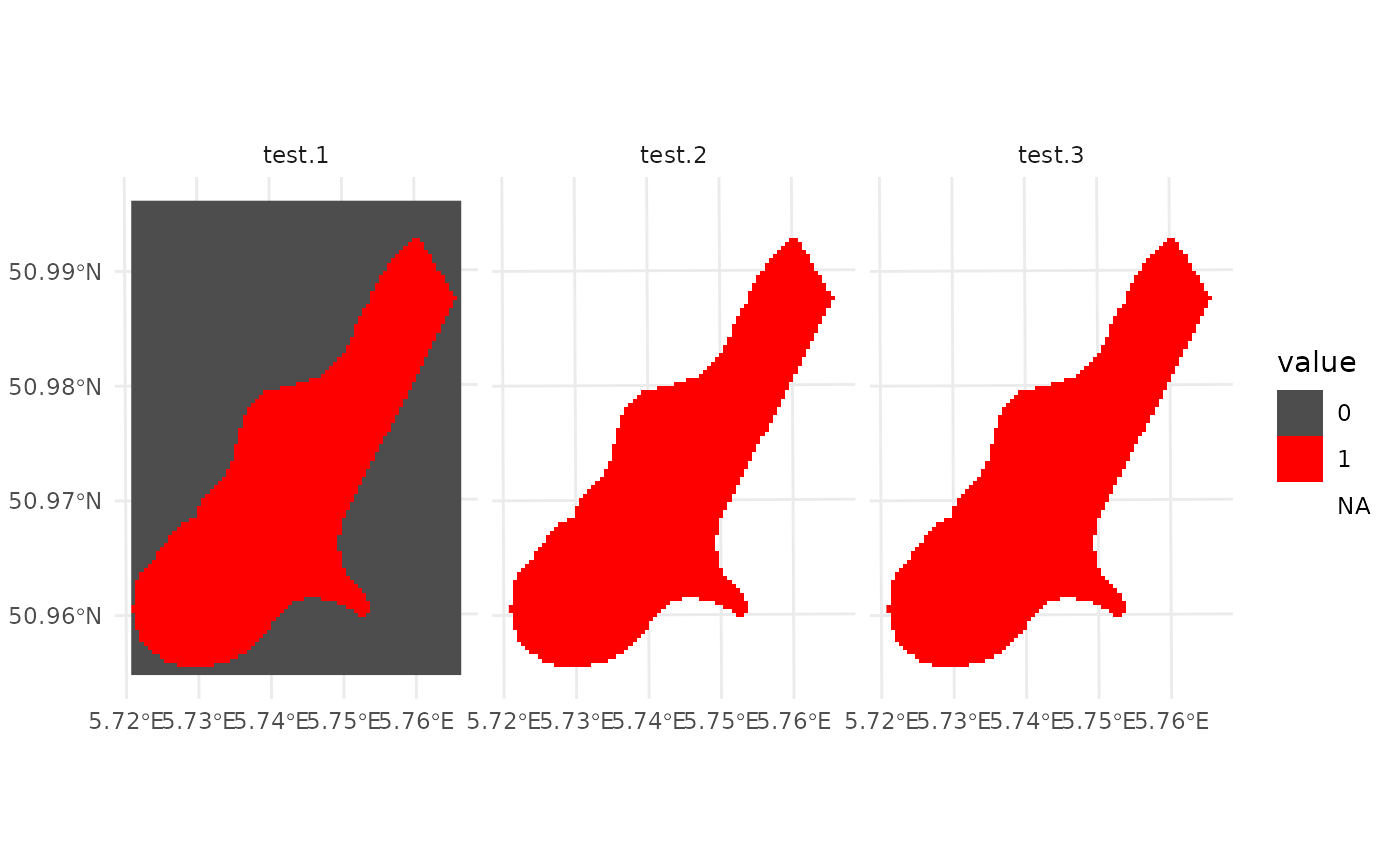This function converts raster values into a binary format where positive values are set to 1 (presence) and zeros remain 0 (absence). Additionally, it allows for the conversion of NA values to 0, and/or 0 values to NA, based on the user's choice.
Arguments
- x
The input raster map. It must be of class
PackedSpatRaster,RasterLayer, orSpatRaster. This parameter cannot be NULL.- NA_to_0
A logical value indicating whether NA values should be converted to 0. Defaults to
TRUE.- Zero_to_NA
A logical value indicating whether 0 values should be converted to NA. Defaults to
FALSE.
Value
A raster map where values have been converted according to the specified parameters. This object is of the same class as the input object.
Examples
IASDT.R::LoadPackages(List = c("dplyr", "raster", "ggplot2", "tidyterra"))
r <- raster::raster(system.file("external/test.grd", package = "raster"))
ggplot2::ggplot() +
tidyterra::geom_spatraster(data = terra::rast(r), maxcell = Inf) +
ggplot2::theme_minimal()
 R2 <- raster::stack(
# NA replaced with 0
RastPA(x = r),
# NA is kept as NA
RastPA(x = r, NA_to_0 = FALSE),
# 0 replaced with NA in the second map
RastPA(x = RastPA(r), Zero_to_NA = TRUE))
ggplot2::ggplot() +
tidyterra::geom_spatraster(
data = terra::as.factor(terra::rast(R2)), maxcell = Inf) +
ggplot2::facet_wrap(~lyr) +
ggplot2::scale_fill_manual(values = c("grey30", "red"),
na.value = "transparent") +
ggplot2::theme_minimal()
R2 <- raster::stack(
# NA replaced with 0
RastPA(x = r),
# NA is kept as NA
RastPA(x = r, NA_to_0 = FALSE),
# 0 replaced with NA in the second map
RastPA(x = RastPA(r), Zero_to_NA = TRUE))
ggplot2::ggplot() +
tidyterra::geom_spatraster(
data = terra::as.factor(terra::rast(R2)), maxcell = Inf) +
ggplot2::facet_wrap(~lyr) +
ggplot2::scale_fill_manual(values = c("grey30", "red"),
na.value = "transparent") +
ggplot2::theme_minimal()
